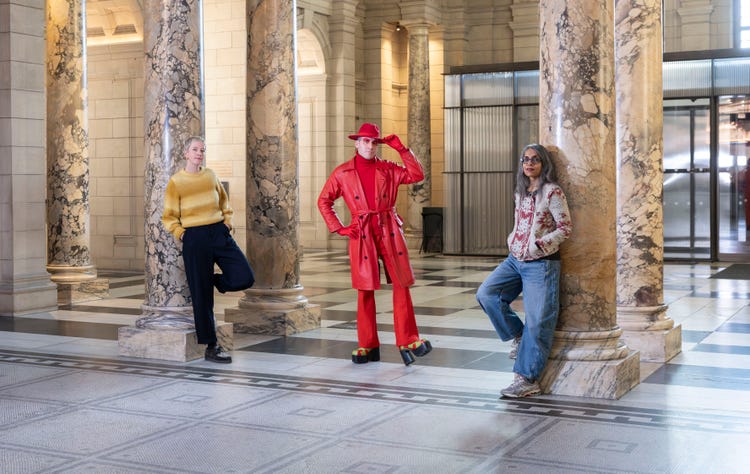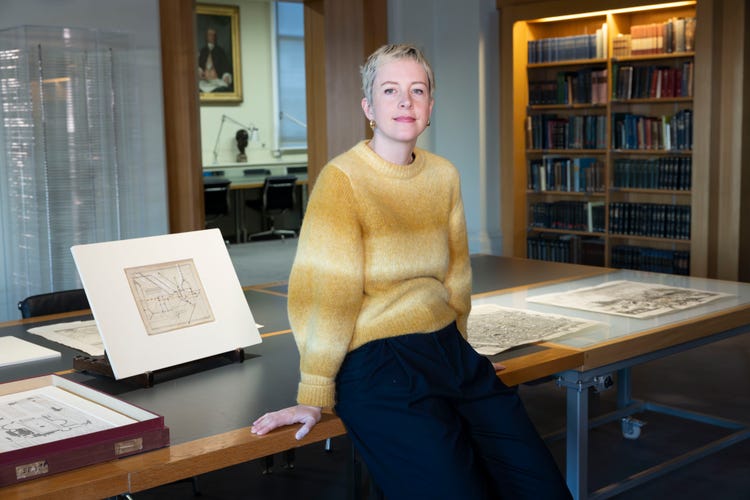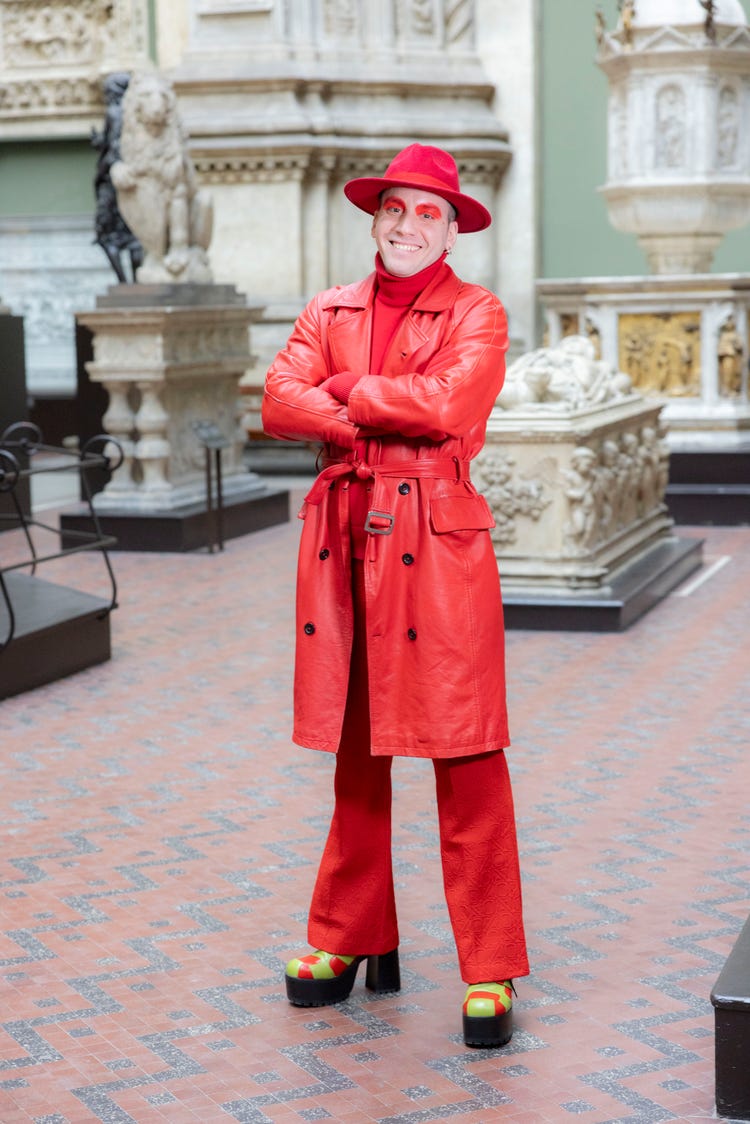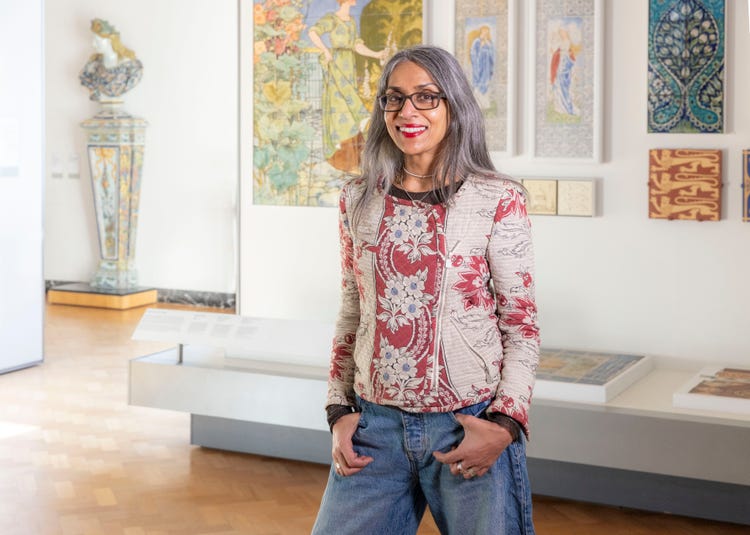Presenting to you the latest cohort of Adobe Creative Residents at the V&A

Sharing a big, warm welcome to our new Adobe Creative Residents who have joined the Victoria and Albert Museum (V&A) in London as full time Residents, as part of the Adobe x Museums programme launched in June 2023. The Adobe Creative Residency has big ambitions to transform access to the arts and creative expression for young people across the world, whilst inspiring a new generation of artists focused on connection and community.
Our trio are Rachel Sale, Luca Bosani and Jacqui Ramrayka. Respectively they come from the worlds of illustration, costume design and ceramics. During their 12-month full-time residencies at the V&A they will get access to on-site studios, mentors within the industry, and in January 2025 their work will be on display at the museum. All three Residents will also be supporting the V&A in expanding its public programming initiatives, which will see engagement with families, young people and students triple in reach this year.
The Adobe Creative Residency programme – supported by the Adobe Foundation – is a multi-year collaboration between the V&A in London and the Museum of Modern Art (MoMA) in New York.
Read on to learn more about the Adobe Creative Residents at the V&A and how their work will broaden perspectives and support the next generation of creators across the UK.
Meet Rachel Sale

Rachel Sale is a south-east London-based artist interested in where illustration and community building meet. She is the founder of FAT Studio CIC. The not-for-profit creative studio provides a focal point for collaboration with people of all ages and backgrounds on local community-led art projects, clubs, workshops, markets, talent shows and publications. Rachel has also taught her local community illustration to help expand their creative thinking and connect with their neighbours through creativity.
During her Creative Residency, Rachel will focus on the process of map-making to enable community participation, particularly amongst family audiences.
When asked what her hopes are for her residency, Rachel said: “I am looking to spark new ideas from the V&A collections, and that the work inspires a whole new chapter of ideas in me.
“I’ll be researching maps at the V&A with aim of creating an exhibition and display of experimental maps for the end of my residency which I’m most excited about.
“Everybody who works at the V&A is incredibly talented and makes the V&A the most inspiring resource it can be.”
Rachel sets a high priority on engagement with underrepresented communities. “We must learn from each other and listen to each other, particularly voices that historically we have not heard enough,” she said.
Meet Luca Bosani

Luca Bosani is a multimedia artist, specialising in wearable and performance art. They developed a concept of Unidentified Performing Objects (UPO) to break down binary categorisation. These are pieces that blur the line between costume, prop and artistic output used in performances. Their practice focuses on breaking down barriers and labels through display and performance, posing questions such as: “When does a costume become a painting?” or “When does a shoe become a sculpture?”
Luca’s work is characterised by their continuous research for innovative ways to reimagine and portray identity, challenge gender stereotypes, and provide alternatives to binary readings of reality.
Luca’s residency will initially focus on V&A’s theatre and performance collection, gradually expanding to include pieces from other collections at the V&A, in turn influenced by engaging with different audiences through workshops and performances in the gallery.
Luca said: “My focus is on blurring the boundaries between disciplines, focusing on queerness, identity and mental health and the concept of UPO.
“My art is for everyone – equality, inclusivity and perpetual innovations are key elements. My art is fluid, transformative and contextually and historically informed. Practically I create UPOs - objects which create experiences and performances in which everyone is invited to take part led by equality, inclusivity, and respect for others.
With their focus on reaching young people, Luca said: “Young people are like sponges, they are trying to discover themselves and surroundings. So many people can feel isolated and marginalised by society, this is an area I want to explore and work with.”
Meet Jacqui Ramrayka

Jacqui Ramrayka is a British-Guyanese ceramicist working with porcelain, currently exploring ways to articulate notions related to themes of memory and grief, through the Indo-Caribbean diasporic identity which - particularly since the Windrush era – she feels has morphed into a hybrid of different cultures. She explores how objects can embody these concepts, exploring connections between personal and collective memories, trying to give form to something intangible using residue and remnants, fractures, and erosion.
During her residency she will explore wider themes of diasporas, home, and belonging, working with the V&A Schools programme.
When asked about the current focus of her work, Jacqui said: “I focus on clay vessels which I see as an incredibly powerful form; I see them as containers for meanings and ideas. My work is exploratory, and I like to push at the edges of what you are supposed to do with clay.
“There’s not a lot of knowledge of the Indo-Caribbean culture over here, the community is quite disparate, and I am looking to redress that and investigate my history as well as discover new things.
“Through my residency I will be working with school groups and also engaging with the diaspora through workshops. I want to bring people together and open conversations while we’re making, so that people can tell their stories of migration and histories and talk about identity and belonging. I hope to give community a voice.”
Welcoming new international partners to the programme
This year, we also welcome two new global programmes and partners to the Adobe x Museums programme.
The Museum of Art and Photography Bengaluru (MAP) aims to provide school children, particularly those from underprivileged backgrounds and rural areas, with access to arts-centred and arts-integrated learning. Through its Museum in a Box programme, MAP loans kits with reproductions of artworks from its collection, along with digital and physical resources, lesson plans, and workbooks to these schools with little access to museums. With the Adobe Foundation’s support of this programme, MAP expects its viewership to reach 40,000 in 2024.
The Museum of Image and Sound São Paulo (MIS) is committed to preserving the audiovisual memory of Brazil through a rich collection of photographs, videos, films, and audiovisual records. Adobe Foundation’s support enables MIS to improve access to the museum for populations facing socioeconomic barriers. Initiatives include free programme offerings, staying open during afterwork hours, and covering the costs of young people in its Experimental Youth Group in Cinema — which encourages the creation of national short films and provides training for young people in audiovisual production. MIS plans to extend the showing hours for its exhibits and offer nightly guided visits for public school students.
You can read more about the Adobe Creative Residency program here, and the creation of the Adobe x Museums initiative and its aims here.